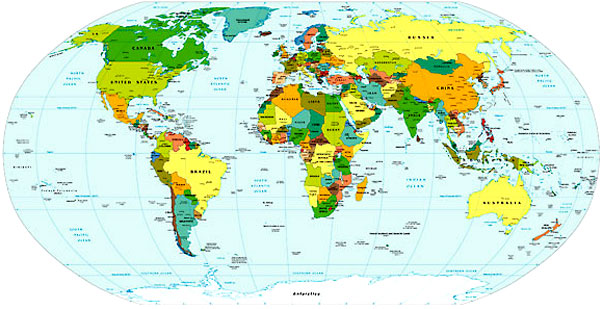 So, we come to landlocked Armenia, which on 21 September celebrates its 1991 independence from the USSR. Of course, Armenians have a lot of formation and independence dates—from the tradition formation date of 11 August, 2492 BCE to the 28 May, 1918 establishment of the Democratic Republic of Armenia. There are other milestones in between—the 190 CE formation of the Kingdom of Armenia. The 301 CE establishment of the Armenian Apostolic Church. Are you getting the sense that we’re in a region with a long history? And yet, if people know one thing about Armenia it will probably be about the genocide—often termed the first genocide of the twentieth century—and the resulting diaspora. And you may remember Mt Ararat, the resting place, supposedly, of Noah’s Ark. Historically this was part of Armenia—but now it’s located in Turkey. Still, the mountain is part of the Armenian national emblem.
So, we come to landlocked Armenia, which on 21 September celebrates its 1991 independence from the USSR. Of course, Armenians have a lot of formation and independence dates—from the tradition formation date of 11 August, 2492 BCE to the 28 May, 1918 establishment of the Democratic Republic of Armenia. There are other milestones in between—the 190 CE formation of the Kingdom of Armenia. The 301 CE establishment of the Armenian Apostolic Church. Are you getting the sense that we’re in a region with a long history? And yet, if people know one thing about Armenia it will probably be about the genocide—often termed the first genocide of the twentieth century—and the resulting diaspora. And you may remember Mt Ararat, the resting place, supposedly, of Noah’s Ark. Historically this was part of Armenia—but now it’s located in Turkey. Still, the mountain is part of the Armenian national emblem. Armenia was the first country in the world to take on Christianity as the official state religion. These days over 93 percent of Armenian Christians belong to the Armenian Apostolic Church. But there are many religions practiced—not surprising given that there have been so many other cultures breezing through. (Not really breezing… invasion is usually a bit more, well, violent than that.
Of course, with its position between the continents of Europe and Asia, Armenia was subjected to invasions by all kinds of people—for instance, the Greeks, the Romans, Byzantines, Arabs, Mongols, Turks, Russians…
The genocide? It occurred during and just after World War I. Massacres, forced marches, deportations—often leading to the death of the deportees. This was a systematic destruction of the Armenian population of the Ottoman Empire, though Turkey—the successor to the Ottoman Empire—doesn’t accept the term genocide as an accurate depiction of the event. We don’t know how many people died—though even Turkey admits that it was hundred of thousands, while Armenia states it was one and a half million. While around 3 million Armenians live in Armenia, the Armenian diaspora population is estimated to be 8 million.
 Following the Russian gain of eastern Armenia during World War I, the Bolshevik Revolution in 1917 got in the way. Eastern Armenia, Georgia and Azerbaijan tried to get together on a Trancaucasian Democratic Federative Republic, but that didn’t last. Afterwards Eastern Armenia became the Republic of Armenia. It didn’t last. Turkish nationalist forces invaded, and this resulted in the Turkish-Armenian war—just before this ended in the Treaty of Alexandropol, the Soviets invaded. The republic collapsed, and suddenly Armenia was part of an SSR.
Following the Russian gain of eastern Armenia during World War I, the Bolshevik Revolution in 1917 got in the way. Eastern Armenia, Georgia and Azerbaijan tried to get together on a Trancaucasian Democratic Federative Republic, but that didn’t last. Afterwards Eastern Armenia became the Republic of Armenia. It didn’t last. Turkish nationalist forces invaded, and this resulted in the Turkish-Armenian war—just before this ended in the Treaty of Alexandropol, the Soviets invaded. The republic collapsed, and suddenly Armenia was part of an SSR. And then, with 1991’s break up of the Soviet Union, Armenia became the first non-Baltic state to secede. While there have been questions about the fairness of previous Armenia elections—the country has been categorised as a “Semi-consolidated Authorarian Regime” by Freedom House’s recent report—this year’s election were deemed to be largely democratic by international observers.
Today’s poem is by Gevorg Emin, and it comes from Language for a New Century. (I’ve said it before, and I’ll say it again: this volume is amazing. I really recommend it to anyone interested in poetry—it’ll expand your view of what’s going on in world poetry.)
Small
Yes, we are small
the smallest pebble
in a field of stones.
But have you felt the hurtle
of pebbles pitched
from a mountaintop?
Small,
as the smallest mountain stream
storing rapids, currents,
unknown to wide and lazy valley rivers.
Small,
like the bullet in the bore
of the rifle;
small as the corn waiting to sprout.
Small
as the pinch of salt
that seasons the table.
Small, yes,
you have compressed us, world,
into a diamond.
Small,
you have dispersed us,
scattered us like stars.
We are everywhere in your vision.
Small,
but our borders stretch
from Piuragan telescopes to the moon,
from Lousavan back to Urartu.
Small as the grain of marvelous Uranium which
cannot be broken down, put out or consumed.
—Gevorg Emin
translated from Armenian by Diana Der-Hovanessian
from Language for a New Century


No comments:
Post a Comment